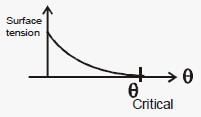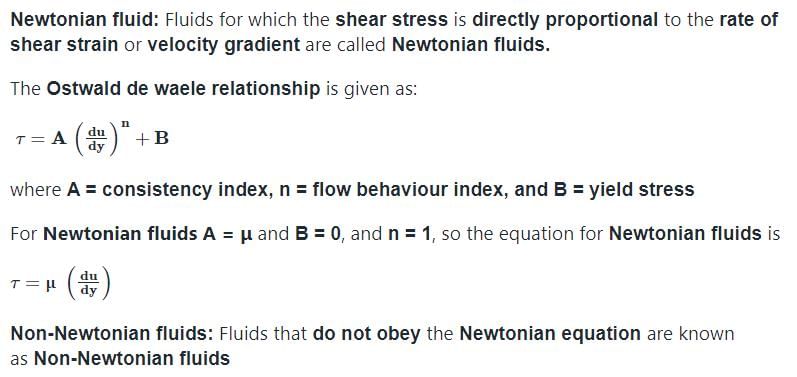Test: Fluid Properties - 1 - Civil Engineering (CE) MCQ
10 Questions MCQ Test GATE Civil Engineering (CE) 2026 Mock Test Series - Test: Fluid Properties - 1
If the dynamic viscosity of a fluid is 0.5 poise and specific gravity is 0.5, then kinematic viscosity of that fluid in stokes is
In a sample of water an increase of pressure by 18 MN/m2 caused 1% reduction in volume. The bulk modulus of elasticity of this sample, in MN/m2 is
The rise of liquid of specific weig ht ‘γ’ and surface tension ‘σ’ in a capillary tube of radius ‘r’ is given by
Work done in blowing a soap bubble of diameter 12 cm will be. Assume the surface tension of soap solution = 0.04 N/m.
The intensity of pressure developed by surface tension of 0.075 N/m in a droplet of water of 0.075 mm diameter is
Two fluids 1 and 2 have mass densities of p1 and p2 respectively. If p1 > p2, which one of the following expressions will represent the relation between their specific volumes v1 and v2?
A Newtorian fluid fills the clearance between a shaft and a sleeve, when a force of 0.8 kN is applied to the shaft, parallel to the sleeve, the shaft attains a speed of 1.5 cm/s. If a force of 2.4 kN is applied instead the shaft would move with a speed of
Consider the following statements:
1. Surface tension is due to cohesion only.
2. Capillarity is due to adhesion only.
3. Surface tension is due to both cohesion and adhesion.
4. Capillary is due to both cohesion and adhesion.
Which of these statements are correct?
If the relationship between the shear stress τ and the rate of shear strain du/dy is expressed as τ = k(du/dy)n then the fluid with a value of exponent n > 1 is known as
|
31 docs|280 tests
|




























